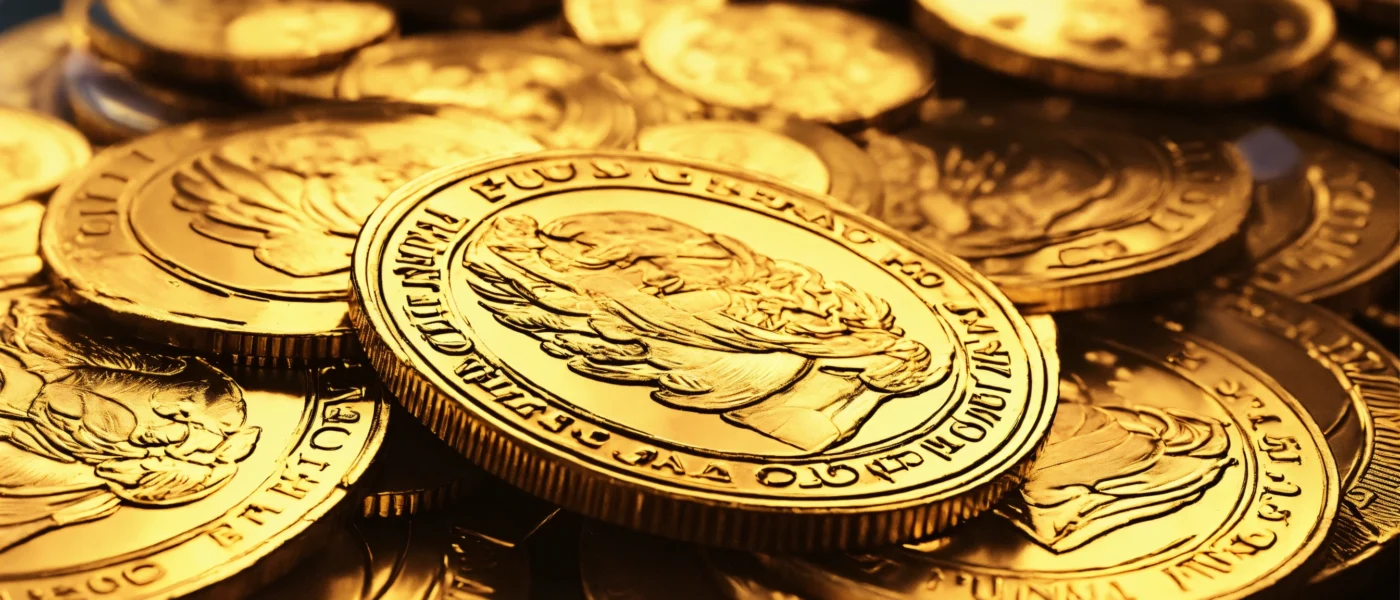Diving into the world of coin collecting can be as thrilling as uncovering hidden treasures. Among the most intriguing and potentially lucrative areas of numismatics is investing in wheat penny. These small but significant pieces of American history have captivated collectors and investors for decades. Whether you’re a novice just starting out or someone looking to enhance your investment portfolio, this guide will provide you with everything you need to know about wheat penny.
What Are Wheat Penny?
Historical Background
Wheat penny, officially known as Lincoln wheat cents, were minted by the U.S. Mint from 1909 to 1958. They were introduced to celebrate Abraham Lincoln’s 100th birthday and to replace the Indian Head cent. This period of coinage saw the introduction of new designs that reflected the changing American landscape and economy.
The decision to feature Lincoln on the obverse (front) of the penny was a historic first, marking the first time a real person, as opposed to a symbolic figure, appeared on a U.S. coin. The reverse side features two ears of wheat penny, symbolising the nation’s agricultural roots, which was a nod to the importance of farming in early 20th-century America.
Design and Features
The design of the wheat penny is both simple and elegant. The obverse features a profile of Lincoln with the inscription “LIBERTY” and the year of minting. The reverse side displays the wheat stalks and the words “ONE CENT” and “UNITED STATES OF AMERICA.” The coin’s design, created by sculptor Victor David Brenner, remains one of the most beloved in American numismatic history.
Why Invest in Wheat Penny?
Historical Significance
Investing in wheat penny offers more than just financial benefits; it connects you to a piece of American history. These coins were minted during significant periods in U.S. history, including both World Wars and the Great Depression. Collectors often find value in owning a piece of this historical narrative.
Potential for Appreciation
Wheat penny, particularly rare varieties and those in excellent condition, can appreciate significantly in value over time. Their relatively low entry cost compared to other numismatic investments makes them an attractive option for both new and experienced investors. As with any investment, though, knowledge is key—understanding which coins are likely to appreciate and why is crucial to maximising returns.
Understanding Wheat Penny Values
Factors Influencing Value
The value of wheat penny can be influenced by several factors:
- Mint Marks: Coins minted in different locations—Philadelphia (no mint mark), Denver (D), or San Francisco (S)—can have varying values. For example, a penny minted in San Francisco might be more valuable due to its lower mintage.
- Condition: The condition of a coin is graded on a scale ranging from Poor (P) to Mint State (MS). Coins in higher grades, with minimal wear and strong detail, are more valuable.
- Rarity: Some coins are simply rarer than others, either due to their limited mintage or because they were destroyed or lost over time. Rare varieties command higher prices.
Commonly Sought-After Varieties
Certain wheat penny are highly sought after by collectors due to their rarity or unique characteristics:
- 1909-S V.D.B.: This penny is famous for its low mintage and the presence of the designer’s initials (Victor David Brenner) on the reverse. The 1909-S V.D.B. is one of the most coveted wheat pennies and can command thousands of dollars in high grades.
- 1922 No D: An intriguing variety where the “D” mint mark, indicating Denver minting, is missing. This error is rare and highly prized.
- 1955 Double Die: Known for its distinctive doubling of the date, this penny is a favourite among collectors for its unique appearance.
How to Start Investing in Wheat Penny
Educate Yourself
Knowledge is your best asset when it comes to coin collecting. Start by reading books and articles about wheat penny, and participate in online forums or join local coin clubs. Understanding the history, design, and grading of these coins will help you make informed decisions.
Building a Collection
Begin with coins that are more affordable to get a feel for the market. Over time, you can expand your collection to include rarer and more valuable pieces. Consider focusing on specific themes, such as pennies from a particular year or those with unique mint marks.
Finding Reliable Sources
To build a collection or make investments, purchase from reputable dealers, attend coin shows, or use trusted online marketplaces. Ensure that any coin you buy comes with a certification or guarantee of authenticity. Avoid deals that seem too good to be true, as they may involve counterfeit or misrepresented coins.
Grading and Appraisal
Understanding Coin Grades
Wheat penny are graded on a scale from Poor (P) to Mint State (MS), with intermediate grades such as Fine (F) and Very Fine (VF). Here’s a brief overview:
- Good (G): Significant wear with all major features visible.
- Fine (F): Moderate wear but details are clear and distinct.
- Uncirculated (MS): Mint condition with no wear and original lustre intact.
Grading is crucial because it directly affects a coin’s value. High-grade coins are more desirable and command higher prices.
Professional Appraisal
For high-value coins or those you are considering for significant investment, a professional appraisal is recommended. Professional numismatists can provide an accurate assessment of your coins’ authenticity and value.
Read more about: Everything You Need To Know About Fintechzoom GE Stock
Storage and Preservation
Proper Storage Techniques
Proper storage is essential for preserving the condition of your wheat penny. Use acid-free holders, such as coin flips or holders, and store them in a cool, dry environment. Avoid exposure to light, moisture, or pollutants, which can cause tarnishing or corrosion.
Cleaning and Maintenance
Avoid cleaning your coins with abrasives or chemicals, as this can reduce their value. If your coins need maintenance, consult a professional. Handling coins with clean gloves or using tweezers can prevent damage.
Market Trends and Investment Tips
Understanding Market Trends
Coin markets can be influenced by various factors, including economic conditions, collector interest, and market trends. Staying informed about these trends helps you make strategic investment decisions.
Diversifying Your Investment
Whole wheat penny can be a valuable investment, consider diversifying your portfolio to include other types of coins or assets. This strategy can help mitigate risk and enhance overall returns.
Legal and Ethical Considerations
Legal Aspects of Coin Ownership
Ensure that your coin investments comply with local, state, and federal regulations. Some jurisdictions have specific laws regarding the ownership and trading of rare coins.
Ethical Collecting Practices
Always purchase coins from ethical sources and avoid dealing in stolen or counterfeit items. Transparency and integrity in transactions contribute to a healthy and trustworthy numismatic market.
Joining the Coin Collecting Community
Online Forums and Groups
Joining online forums and social media groups dedicated to coin collecting can provide valuable networking opportunities and insights. Engaging with other collectors can enhance your knowledge and open doors to potential deals.
Coin Shows and Conventions
Attending coin shows and conventions is a great way to see rare coins, meet fellow collectors, and stay updated on market trends. These events also offer opportunities to buy and sell coins in a face-to-face setting.
Conclusion
Investing in wheat penny offers a fascinating blend of historical significance and financial potential. By understanding their value, learning about the market, and following best practices for collection and preservation, you can make informed investment decisions. Whether you’re captivated by the historical aspect or the potential for appreciation, wheat penny provides a unique avenue for investment and enjoyment.
FAQs About Wheat Penny
1. What is the most valuable wheat penny?
The 1909-S V.D.B. the wheat penny is one of the most valuable, due to its rarity and historical significance. High-grade examples of this coin can fetch thousands of dollars.
2. How can I determine the value of my wheat penny?
To determine the value, consider factors such as rarity, condition, and market demand. Professional grading services can provide accurate evaluations.
3. Are there any common mistakes to avoid when investing in wheat pennies?
Common mistakes include purchasing from unreliable sources, overpaying for common varieties, and improper coin handling. Always verify authenticity and consult experts if needed.
4. How should I store my wheat pennies to maintain their value?
Store your pennies in acid-free holders or capsules in a cool, dry environment. Avoid touching them with bare hands and ensure they are protected from light and moisture.
5. Where can I buy wheat pennies?
Wheat pennies can be purchased from reputable coin dealers, online marketplaces, and at coin shows. Always ensure the coins come with certification or guarantees of authenticity.




